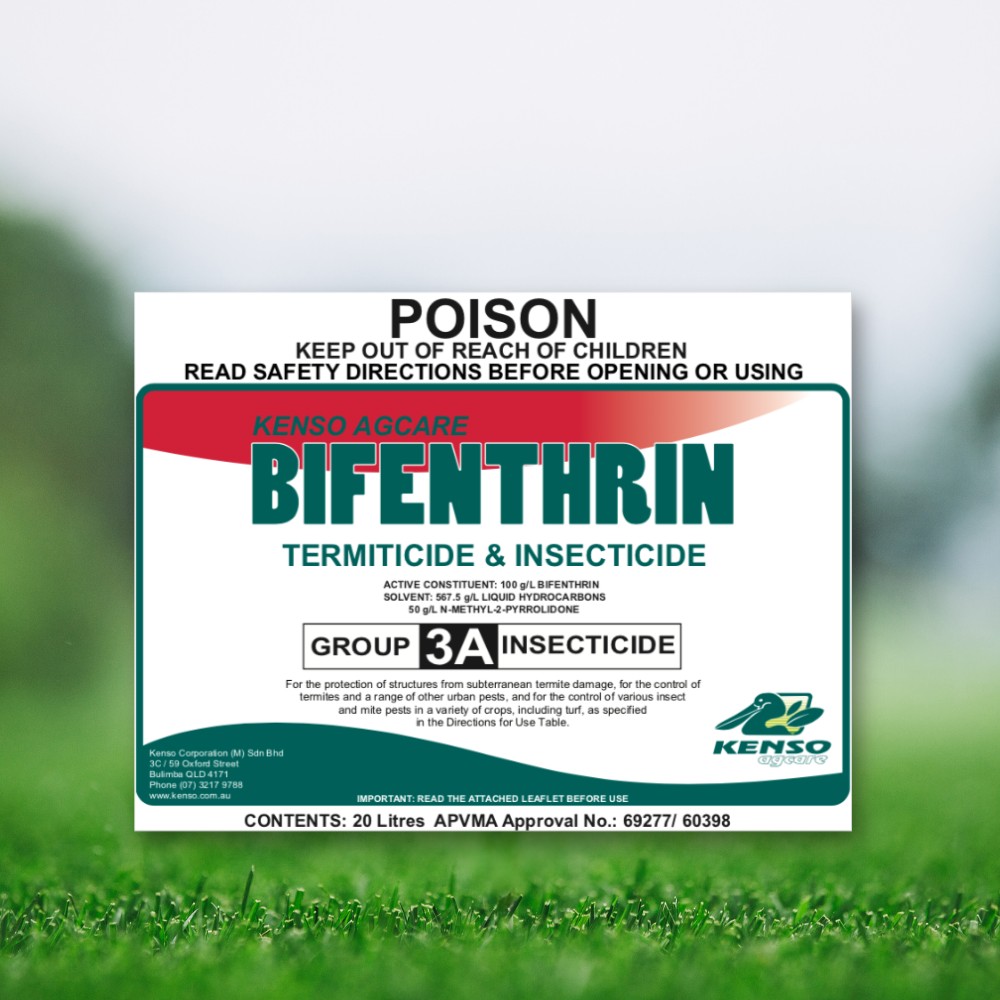Bifentrin
Area to use

Bifenthrin Termiticide & Insecticide is a contact and residual insecticide/miticide. It can be used as a protective treatment when applied at regular intervals or as a knockdown treatment to control existing pests. Best results are obtained when Kenso Agcare Bifenthrin Termiticide & Insecticide is applied before pest populations build up to damaging levels. This product is not suitable for use in Integrated Pest Management (IPM) programs where mite predators are established and providing effective mite control.
Application Directions
For more details information please refer Label datasheet.
Dilute Spraying:
- Use a sprayer designed to apply high volumes of water up to the point of run-off and matched to the crop being sprayed.
- Set up and operate the sprayer to achieve even coverage throughout the crop canopy. Apply sufficient water to cover the crop to the point of run-off. Avoid excessive run-off.
- The required water volume may be determined by applying different test volumes, using different settings on the sprayer, from industry guidelines or expert advice.
- Add the amount of product specified in the Directions for Use table for each 100 L of water. Spray to the point of run-off.
- The required dilute spray volume will change and the sprayer set up and operation may also need to be changed, as the crop grows.
Concentrate Spraying:
(a) Use a sprayer designed and set up for concentrate spraying (that is a sprayer which applies water volumes less than those required to reach the point of run-off) and matched to the crop being sprayed.
(b) Set up and operate the sprayer to achieve even coverage throughout the crop canopy using your chosen water volume.
(c) Determine an appropriate dilute spray volume (See Dilute Spraying above) for the crop canopy. This is needed to calculate the concentrate mixing rate.
(d) The mixing rate for concentrate spraying can then be calculated in the following way:
Example only;
1. Dilute spray volume as determined above: For example 1000 L/ha.
2. Your chosen concentrate spray volume: For example 500 L/ha.
3. The concentration factor in this example is: 2 x (ie. 1000 L- 500 L = 2).
4. If the dilute label rate is 50 mL/100 L, then the concentrate rate becomes 2 x 50, that is 100 mL/100 L of concentrate spray.
The chosen spray volume, amount of product per 100 L of water, and the sprayer set up and operation may need to be changed as the crop grows. For further information on concentrate spraying, users are advised to consult relevant industry guidelines, undertake appropriate competency training and follow industry Best Practices.
Active Constituent
100 g/L BIFENTHRIN SOLVENT:
567.5 g/L LIQUID HYDROCARBONS, 50 g/L N-METHYL-2-PYRROLIDONE
Mixing
Add the required quantity of Kenso Agcare Bifenthrin Termiticide & Insecticide to water in the spray tank and mix thoroughly. Maintain agitation during both mixing and application. To facilitate even application of the diluted spray mixture over the area to be treated, the addition of a marker dye at label rates is recommended. On hard to wet soils, the penetration of the diluted spray mixture may be improved by the addition of a soil surfactant at label rates.
PRECAUTIONS AND RE-ENTRY PERIOD – PEST CONTROL
DO NOT spray directly on humans, pets or animals. Avoid contact with food, food utensils or preparation surfaces.
Re-entry Period – Pest Control
DO NOT allow people and pets to enter treated areas until the spray has dried. When prior entry is necessary, wear cotton overalls buttoned to the neck, wrist and elbow-length PVC, neoprene or nitrile gloves and chemical resistant footwear. Clothing must be laundered after each day’s use.
Packaging
20 Liter

